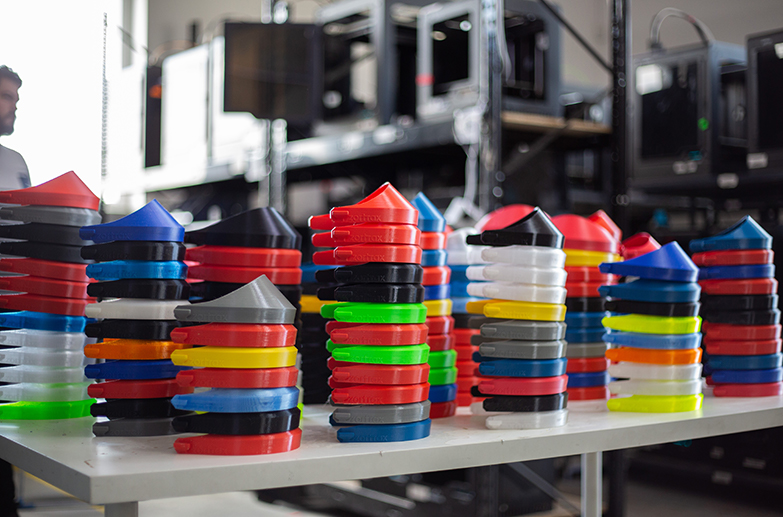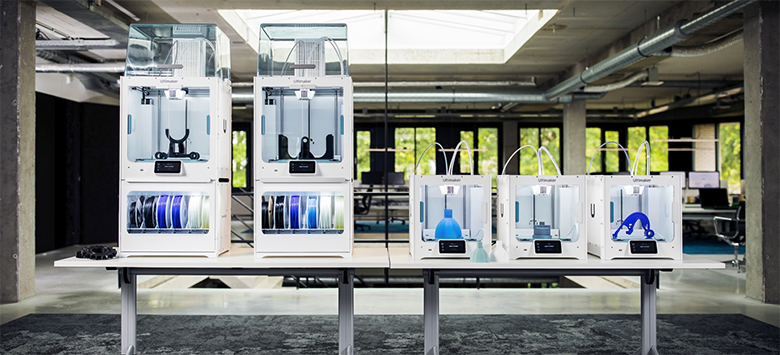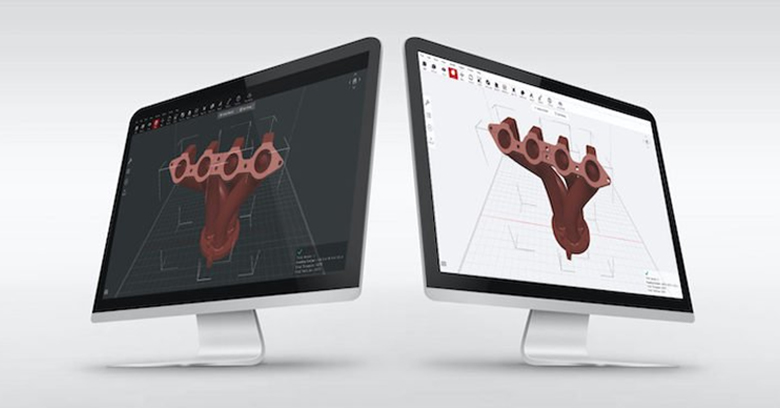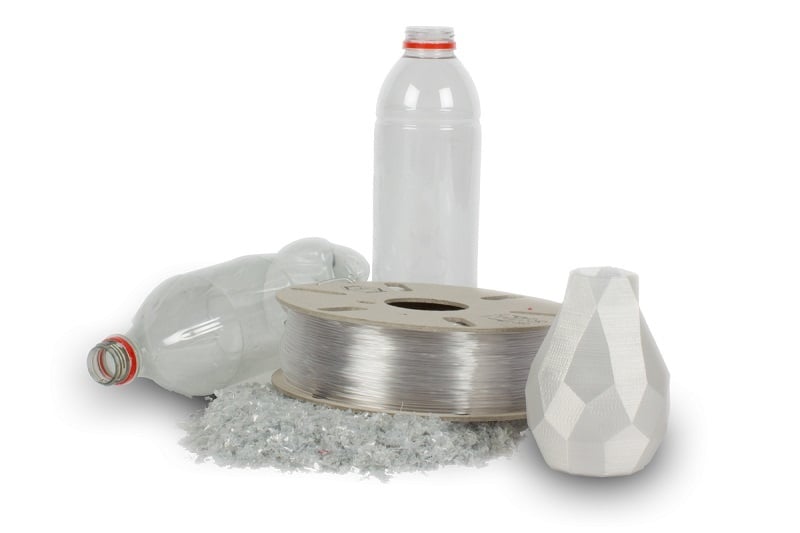No one in 3D printing could have predicted how 2020 would unfold. The cost of the pandemic to the additive manufacturing industry is still being calculated and more recession-related economic woes are expected.
What “normal” will look like and when we’ll reach it is anyone’s guess, but 2020 wasn’t all bad news. In fact, many are calling this past year a turning point in the industry where 3D printing featured front-and-center as a business solution to supply chain breakdowns and a viable technology for local, on-demand manufacturing.
For a look at what to expect in 2021, we turned to our own All3DP Editorial Advisory Board of industry leaders for insight and context.

New Focus on Building Public Awareness
2020, despite the tragedy of the pandemic, opened new doors for additive manufacturing, and it’s time to get down to business to ensure this opportunity doesn’t slip away, our board agreed.
The pandemic highlighted supply chain vulnerabilities that manufacturers and businesses didn’t realize they had – or didn’t have a pressing reason to fix. For many, 3D printing became a solution. The speed at which 3D printer owners and manufacturers pivoted to produce personal protective equipment and medical devices garnered positive media attention worldwide, which no doubt led business owners to take a closer look at the technology as a tool.
“The urgent need to produce PPE pushed thousands of individuals and SMEs to quickly develop dozens of prototypes to find the perfect ergonomic versions, distribute the file to all those willing to help in production, and produce hundreds of thousands of protective masks and similar PPE to be distributed in hospitals in just a matter of days. AM literally saved thousands of lives,” says Diogo Quental, Rise3D‘s general manager. “No effort in the AM industry could have promoted these concepts with the same impact as the pandemic.”
2020 will be seen as a turning point for the adoption of 3D printing technologies into manufacturing, echoes Patrick Carey, senior vice president at Stratasys. “For many years, manufacturers around the world have been experimenting with additive technologies, but there was no significant reason to upset the status quo. In 2020, the pandemic changed the status quo for every company on many levels, initially with supply chain disruptions, quickly followed by disruptions in demand from locked-down consumers.”

Although printing PPE was the most visible example illustrating the power of additive technologies, almost every company had an example of a prototype, part, fixture, or spare part that was printed because they couldn’t get what they needed due to the supply chain issues, lock down, or both, says Carey.
And now, with the Covid vaccine developed, businesses are planning for less disruption in 2021, but lessons learned will not quickly be forgotten.
“The strategic implications for global companies, governments, and society, of supply chain vulnerability, won’t go away,” says Douglas Krone, CEO of printer and materials reseller Dynamism. Major supply chain disruptions could be caused by another pandemic, a natural disaster, or a geopolitical issue, he notes, “so global companies and governments will increasingly use additive manufacturing to de-risk their supply chains.”
But will additive manufacturing be able to capitalize on the momentum of 2020? That will depend on what solutions the industry can deliver in 2021 and if it can start to address its own end-user more directly, says Kristin Mulherin, president and founder of AM-Cubed, an industry consultancy.

3D Printing Still Has Something to Prove
“The media attention 3D printing earned in 2020 reinvigorated the industry. I’ve especially seen a big push to speak more to new potential end-users, such as those within the injection molding industry, conveying more user-friendly and real world examples of additive manufacturing,” says Mulherin. “Across the board, the theme of 2021 will be further increasing awareness so as not to lose the benefits of the momentum gained in 2020. The industry is moving so fast that we risk developing technologies faster than the market can consume them in a real capacity.”
2020 presented additive manufacturing with a spotlight where it proved its benefits in PPE and select other areas. The challenge now is to fulfill the promise of AM by demonstrating that it is no longer an up-in-coming technology, but a viable manufacturing solution.
“The hype-stage [of additive manufacturing] is over and we now, as an industry, have to prove that AM is playing a key role in making the full product cycle more flexible, efficient, cost effective, productive, and local,” says Jos Burger, CEO of Ultimaker. “We are shifting from a novelty to a business productivity tool.”
Not every manufacturer is ready to make this shift. The accelerated maturity curve brought on by the pandemic won’t favor everyone, but for those ready to take advantage of this awareness boost, 2021 could be a time of unprecedented growth.

Manufacturing, the Biggest Growth Sector in 2021
Although additive manufacturing reaches well beyond just the manufacturing sector and will continue to broaden its appeal in a wide range of verticals as printers become easier to use, manufacturing is still the area where the most growth is expected, our experts agree.
“We think the biggest growth will come in jigs and fixtures, manufacturing tools, and other factory parts,” says Krone.
Small manufacturers, moving away from machining and molding towards customized small volume production, could also see substantial growth in 2021, along with the dental industry, which is expected to move beyond the 3D printed molds to direct printed aligners and dentures.
Printers Will Be Faster & Better, But Not Cheaper
Additive manufacturing will enjoy organic growth as businesses turn to it to solve a range of supply and cost issues, but we’ll also see growth from businesses that currently use the technology. Advances in 3D printers and materials themselves are expected to be the driver.
The buzz word for 2021 may be “reliability”.
“Reliability is a key differentiator, and we believe investments in this domain will be strong,” says Jos Burger. “Printers not becoming cheaper, but better, will be the trend.”
At Stratasys, Carey says there will be no time to “play” with machines or materials that are unreliable. With new users looking to adopt 3D printing for their businesses, the experience has to be a positive one right out of the box.
Ensuring reliability is a marriage of software, hardware, and materials, each affecting the other. Printer manufacturers will build on the ecosystem trend of 2020 to bundle software, hardware, and materials (or create partnerships) to offer customers a seamless, comprehensive solution, our experts agree.
“These ecosystems will deliver even better parts, more repeatability, greater reliability than ever,” says Krone. “We’ve seen it in so many other areas of technology where players integrate hardware, software, and third-party marketplaces (in our case, consumables) for a superior experience.”

Software tools that help users more easily create better and more consistent parts are where we see strong innovation today, which should continue into 2021. From simulation software to slicing, management software to digital warehouses and cloud tools, we can expect more tools specifically designed and built for additive manufacturing.
“Improved software and remote management of printers through the cloud is where I expect to see innovation,” says Krone. “With more reliable printers and expanded material capabilities, better management through software will allow businesses to maximize the hardware in the field and know accurate totals on costs and returns.”
We’ll continue to see more integrated systems, more collaborations, and easier to use machines in 2021, but as Mulherin notes, “we need to see more designing for additive and getting pope to think differently about part design.”

Looking Forward to the Promised Land of Series Production
2021 will not be the year that additive manufacturing displaces traditional manufacturing for short-run production, but the industry will take its first steps down that road.
“The trend that would really move the needle for the development and growth of the additive manufacturing industry would be the transition to small series production,” says Brian Alexander, global AM product and business development manager at Solvay Specialty Polymers. “For this to happen there still needs to be a significant improvement in the quality of all aspects of 3D printing from design to materials, processing, and machinery. They are all inextricably linked.”
Both Quental and editorial board member Matthias Schmidt-Lehr, managing partner at the consultancy AMPOWER, agree that reliability, as mentioned above, is that critical first step toward 3D printing becoming a production solution.
“The key factor is repeatability, because it is required to allow the transition to production,” says Quental.
3D printing for production is largely technology specific with metal 3D printing have the largest potential. For FDM however, Burger at Ultimaker says the focus will stay on design, prototyping, tooling, and replacement parts.

More Talk Than Action on Sustainability
Although we’ll hear more about the industry’s sustainability aspirations in 2021, our experts don’t expect significant progress toward adopting sustainable practices.
“Sustainability will gain momentum in 2021, not only with respect to materials and production, but to the complete lifecycle of a part,” says Sylvia Monsheimer, head of market segment N3D, high performance polymers at Evonik Operations. “Many key global players have already established sustainability as a main operational framework, which will lead to demand for sustainable materials and processes.”
Mulherin agrees that sustainability will be a hot topic in 2021. “There’s still quite a bit of waste in 3d printing and considering the global economic environment we’re going to be transitioning into in 2021 and just growing awareness of environmental topics,” she says, “sustainability is going to be a big focus in 2021.”
The Pandemic that Killed the 3D Printing Unicorn
Is additive manufacturing still a fertile ground for start-ups despite the economic downturn, the surging number of patents, and corporate consolidations?
“The current economic environment is making it more difficult for start-ups to raise funds,” says Alexander. “On top of that, the intellectual property space is starting to become crowded, notably in the high-performance polymer space. As such, start-ups will have to offer real breakthrough innovation (on system integration, part performance, speed, and cost) to be successful going forward.”
The deluge of low-cost printers flooding the hobby market, especially from Asia, pushed the more established machines into the business market in 2020. The business 3D printers are now focusing on offering sophisticated features, connectivity, ease-of-use, and software integrations. Startups, therefore, will focus on offering niche products and integrations to help business 3D printers expand their functionalities.
“The new startups will be less focused on becoming IPO Unicorns and be more focused on specific technology innovation with an exit plan of being acquired by one of the industry leaders,” says Carey.
Krone and Mulherin are optimistic that the industry can still sustain startups, but they have to offer innovation and value. “AM is a great place for innovative startups, however, the industry is no longer viable for me-too players without new technology to compete,” says Krone.
Mulherin says there’s plenty of room for startups. She expects to see a lot of new companies coming out of stealth mode in 2021 offering things that are unexpected. “We’re at the right point for startups now. A few years ago we did experience an inflection point and that was the time when people started to work on these startup and soon their solutions will be ready to launch.”
Optimism for 2021
Additive manufacturing weathered 2020 better than most other industries and the challenge now is to maintain the momentum and convince business new to 3D printing that it has broader applications than PPE.
“Once the economic recovery starts, I am convinced that having a more flexible and resilient business model should be the priority for every company, and AM can be the solution for many of them,” says Quental.
Sylvia at Evonik also sees the light at the end of the tunnel: “AM will come out of the crises stronger than before. I expect the 3D printing market to fully recover by 2022.”
Do you have projections for 2021? Please share in our comments section below.
License: The text of "2021: Industry Leaders on the Year Ahead" by All3DP Pro is licensed under a Creative Commons Attribution 4.0 International License.